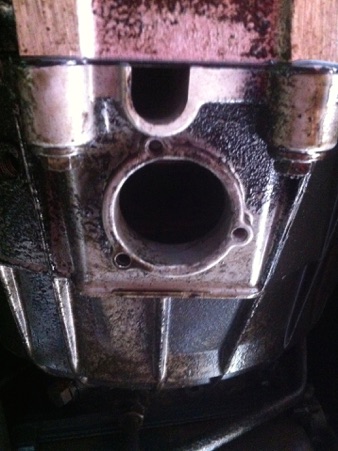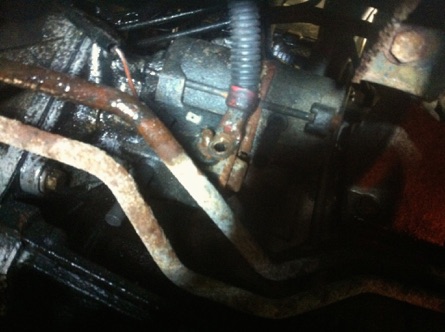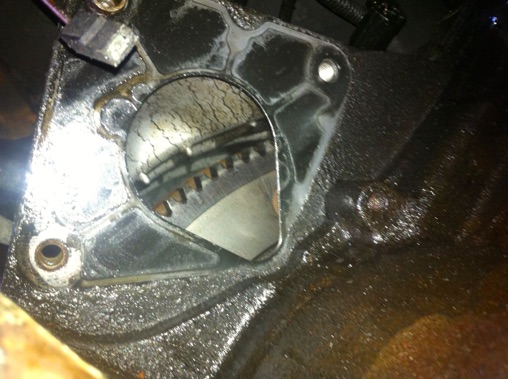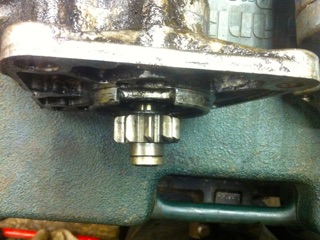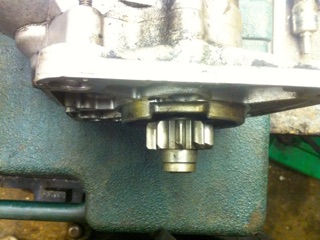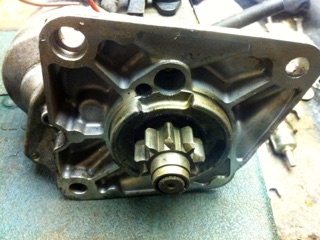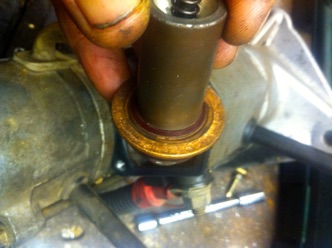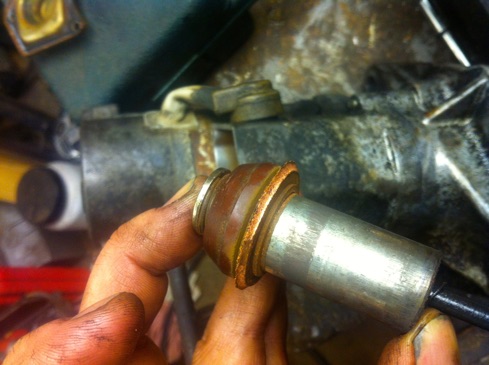A metallic rattling noise suddenly started on my 1999 Land Rover Discovery TD5. It was not very loud and could only really be heard with the engine idling. It was also accompanied by a clung when the engine was turned off. I traced the noise to the inside of the bell housing. If I covered the vent hole at the bottom of the bell housing (the U shaped hole in the photo), the rattling sound was muffled. After doing some research on the internet, I was convinced that the ‘Flexplate’ that couples the torque convertor to the crank shaft must be cracked and about to fail. Replacing the flexplate would require the gearbox separating from the engine, a job I was not looking forward to doing. I priced up a new flex plate from a Land Rover dealer, which was only £18, but no doubt getting them to fit it would be a several hundred pound job.
The first thing to do was verify that the flexplate was indeed at fault, so I raised the vehicle and removed the circular plate from the bottom of the bell housing so that I could inspect the flexplate.










